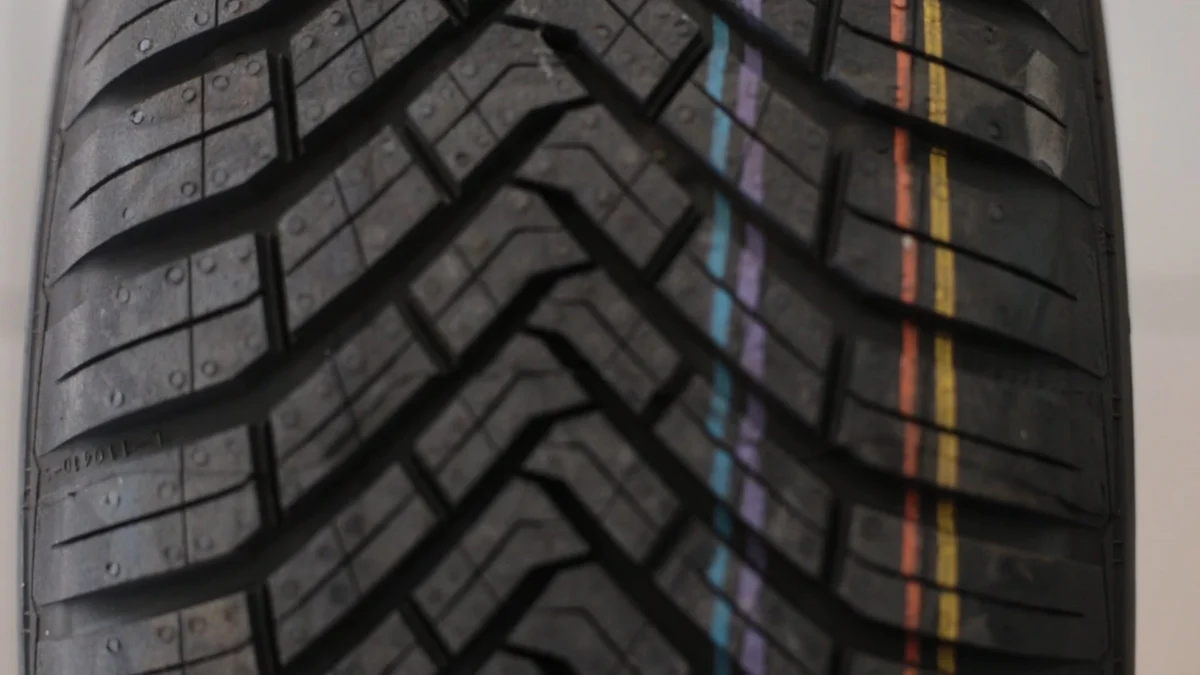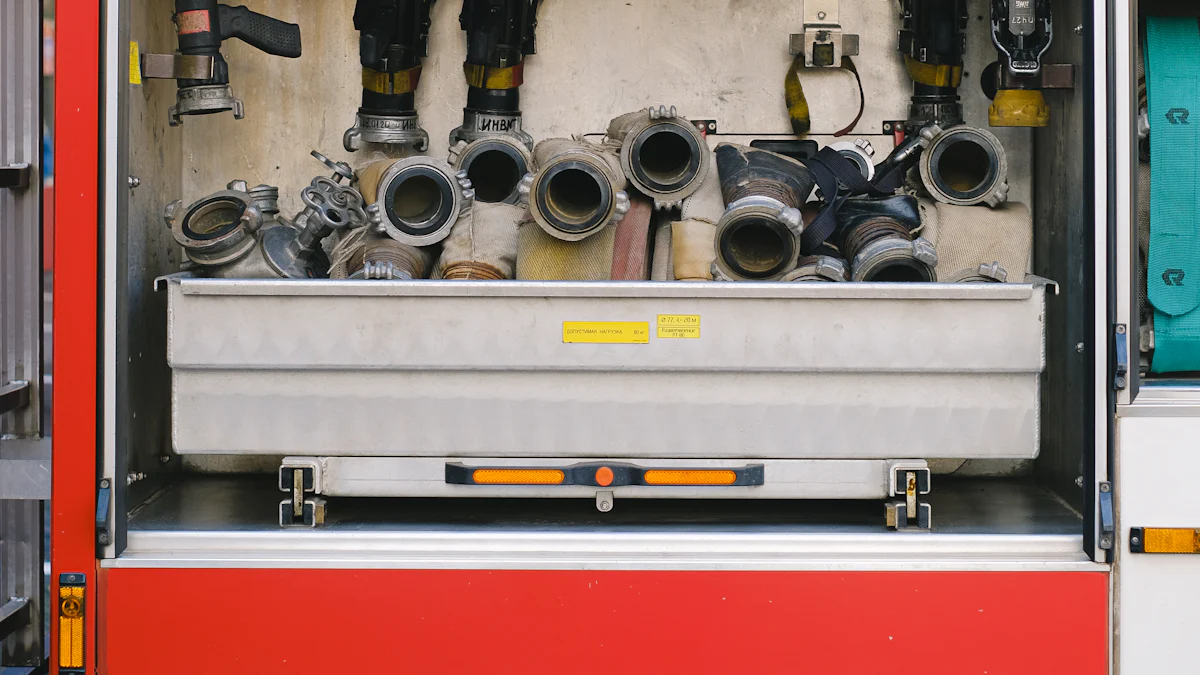
Efficient tire storage starts with the right tire stacking rack. It helps you organize tires neatly, saving valuable space. Proper racks also protect tires from damage caused by improper stacking. With better accessibility, you can retrieve tires quickly and safely. Choosing the right rack ensures your storage system works effectively for your needs.
Key Takeaways
- Pick a tire rack that fits your space and needs. Choices include wall-mounted, freestanding, mobile, adjustable, or custom racks.
- Focus on strength and weight limit when choosing a rack. A sturdy rack keeps tires safe and stored properly.
- Check and care for your tire rack often. This helps it last longer and keeps your storage neat and safe.
Types of Tire Stacking Racks

When it comes to organizing tires, you have several types of tire stacking racks to choose from. Each type offers unique benefits depending on your storage needs.
Wall-Mounted Racks
Wall-mounted racks attach directly to walls, making them ideal for small spaces. These racks keep tires off the floor, freeing up valuable ground space. You can use them in garages or workshops where floor space is limited. They are sturdy and can hold a decent number of tires, but they require proper installation to ensure safety.
Freestanding Racks
Freestanding racks are versatile and easy to set up. You can place them anywhere without needing to drill into walls. These racks come in various sizes, allowing you to store a few tires or a large collection. They are perfect for both personal and commercial use. Their portability makes them a popular choice for those who may need to rearrange their storage area.
Mobile Racks
Mobile racks come with wheels, making them easy to move around. These racks are great for workshops or businesses that frequently need to transport tires. You can roll them to different locations, saving time and effort. They often include locking mechanisms to keep the rack stable when stationary.
Adjustable Racks
Adjustable racks offer flexibility in storage. You can modify the height or width of the shelves to fit different tire sizes. This type of tire stacking rack works well if you store a variety of tires. It ensures that your storage adapts to your changing needs over time.
Custom-Built Racks
Custom-built racks are tailored to your specific requirements. You can design them to fit unique spaces or accommodate unusual tire sizes. While they may cost more upfront, they provide a perfect solution for specialized storage needs. These racks are often used in commercial settings where standard options may not suffice.
Choosing the right type of tire stacking rack depends on your space, budget, and storage needs. Evaluate each option carefully to find the best fit for your situation.
Key Features of a Tire Stacking Rack
Adjustability
Adjustability allows you to customize your tire storage. You can modify the rack to fit different tire sizes or adjust the shelves to maximize space. This feature is especially useful if you store tires of varying dimensions. It ensures that your tire stacking rack adapts to your changing needs over time. Adjustable racks also help you avoid overcrowding, which can damage tires.
Durability and Material
The material of the rack determines its durability. Steel racks offer excellent strength and last for years. Aluminum racks are lightweight but still sturdy. Plastic options work well for lighter loads. Choose a rack made from high-quality materials to ensure it withstands daily use. A durable rack protects your tires and reduces the need for frequent replacements.
Load Capacity
Load capacity is critical when selecting a rack. You need to know how many tires the rack can hold without bending or breaking. Overloading a rack can lead to accidents or damage. Always check the manufacturer’s specifications to ensure the rack meets your storage requirements.
Space-Saving Design
A space-saving design helps you make the most of your storage area. Compact racks fit into tight spaces, while vertical designs allow you to stack tires upward. This feature is ideal for garages or workshops with limited room. Efficient use of space keeps your area organized and clutter-free.
Ease of Assembly
A rack that is easy to assemble saves you time and effort. Look for racks with clear instructions and minimal parts. Some racks come with tools included, making setup even simpler. Quick assembly ensures you can start using your rack right away.
Benefits of Using a Tire Stacking Rack
Maximizing Space
A tire stacking rack helps you make the most of your storage area. By stacking tires vertically, you free up floor space for other uses. This is especially helpful in small garages or workshops where every inch counts. Compact designs allow you to store more tires in less space. With better organization, you can keep your storage area neat and functional.
Protecting Tires
Proper storage prevents damage to your tires. A tire stacking rack keeps tires off the ground, reducing exposure to moisture and dirt. It also prevents tires from being crushed or deformed by improper stacking. By using a rack, you ensure that your tires maintain their shape and quality over time. This protection extends the lifespan of your tires, saving you money in the long run.
Enhancing Accessibility
A well-organized rack makes it easier to find and retrieve tires. You can arrange tires by size, type, or season for quick access. This saves you time when switching tires or performing maintenance. Mobile racks add even more convenience by allowing you to move tires to different locations effortlessly. With better accessibility, you can work more efficiently.
Improving Safety
Safety is a key benefit of using a tire stacking rack. Storing tires securely reduces the risk of accidents caused by falling or unstable stacks. Many racks come with features like locking mechanisms or sturdy frames to ensure stability. By keeping your storage area organized, you also minimize tripping hazards. A safe storage system protects both you and your tires.
Choosing the Right Tire Stacking Rack
Assessing Available Space
Start by evaluating the space where you plan to store your tires. Measure the area carefully to determine the dimensions of the rack you need. Consider the height of the ceiling if you plan to use a vertical rack. Think about how much floor space you can dedicate to the rack without obstructing movement. A compact tire stacking rack works well in smaller garages, while larger spaces can accommodate freestanding or mobile racks.
Commercial vs. Personal Use
Decide whether you need the rack for personal or commercial purposes. For personal use, a smaller rack may suffice, especially if you only store seasonal tires. Commercial settings, such as auto shops, require racks with higher load capacities and durability. Mobile racks are often ideal for businesses that need to move tires frequently. Tailor your choice to match the scale of your storage needs.
Material and Build Quality
Pay attention to the materials used in the rack. Steel racks offer excellent strength and durability, making them suitable for heavy-duty use. Aluminum racks are lightweight yet sturdy, while plastic options work for lighter loads. Inspect the build quality to ensure the rack can handle daily wear and tear. A well-built rack protects your tires and lasts longer.
Budget Considerations
Set a budget before purchasing a rack. Compare different options within your price range to find the best value. While cheaper racks may save money upfront, investing in a high-quality rack can save you from costly replacements later. Look for a tire stacking rack that balances affordability with durability.
Scalability for Future Needs
Think about your future storage needs. If you expect your tire collection to grow, choose a rack that can expand or adjust. Modular racks or adjustable designs allow you to add more storage without replacing the entire system. Planning for scalability ensures your investment remains useful over time.
Installation and Maintenance Tips

Proper Setup Guidelines
Setting up your tire stacking rack correctly ensures safety and efficiency. Start by reading the manufacturer’s instructions carefully. Place the rack on a flat, stable surface to prevent wobbling. Use the recommended tools for assembly, and tighten all bolts securely. If your rack attaches to a wall, use appropriate anchors to ensure it stays firmly in place. Double-check the alignment of shelves or supports before loading tires. A properly set-up rack will last longer and keep your tires safe.
Regular Inspections
Inspect your tire stacking rack regularly to catch potential issues early. Look for signs of wear, such as rust, loose bolts, or bent frames. Check the stability of the rack, especially if it holds heavy tires. If you notice any damage, address it immediately to avoid accidents. Regular inspections help you maintain the rack’s durability and ensure it continues to function as intended.
Cleaning and Maintenance
Keep your rack clean to extend its lifespan. Wipe it down with a damp cloth to remove dust and dirt. For metal racks, use a rust-resistant spray to protect against corrosion. Lubricate moving parts, such as wheels on mobile racks, to keep them operating smoothly. Avoid using harsh chemicals that could weaken the material. A clean and well-maintained rack not only looks better but also performs better.
Safety Practices
Follow safety practices to protect yourself and others. Avoid overloading the rack beyond its weight capacity. Distribute the weight evenly to prevent tipping. Store tires securely to keep them from falling. If your rack has wheels, lock them when the rack is stationary. Always wear gloves when handling heavy tires to reduce the risk of injury. Prioritizing safety ensures a secure and efficient storage system.
Choosing the right tire stacking rack transforms your storage system. It helps you save space, protect tires, and improve accessibility. Evaluate your needs carefully before making a decision. Whether for personal or commercial use, proper tire storage ensures safety and efficiency. Invest in the right rack to keep your tires organized and in top condition.
FAQ
What is the best material for a tire stacking rack?
Steel is the best material for durability and strength. Aluminum works well for lightweight needs. Plastic is suitable for lighter loads or temporary storage.
Can I use a tire stacking rack outdoors?
Yes, but choose a rack with weather-resistant coatings. Protect it from extreme conditions to prevent rust or damage. Regular maintenance ensures longer outdoor use.
How many tires can a typical rack hold?
The capacity depends on the rack type. Most racks hold 4-8 tires. Check the manufacturer’s specifications to ensure it meets your storage needs.
Post time: Feb-06-2025